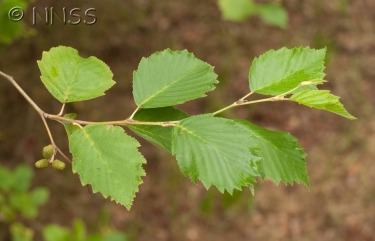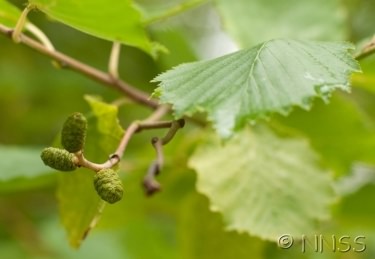


Click any photo for a larger image
Close window
Grey Alder - Alnus incana
Family - Betulaceae
Also known as - Speckled Alder
A fast growing deciduous Alder of poor soils, is an introduced invasive in the UK, native in Europe and found in other cooler parts of the northern hemisphere, it does not do well in shady places and does directly need moist soil as some other Alders do. Of a relatively small stature as trees go, it grows to 15–20m (49–66ft) high, with a life of around 100 years from a shallow root system. The doubly serrulate leaves are a dark green, ovoid and sharply pointed, grey beneath and densely hairy, 5–10cm (2–4in) long and 4–8cm (1.6–3.1in) wide. Yellow brown catkins in small clusters of three or four appear in early spring before the leaves, the male is pendulous 5–10cm (2–4in) long, female are 1.5cm (0.6in) long and around 1cm in diameter maturing to a hard green fruit in the summer, further maturing to a woody brown cone with very small light brown seeds 1–2mm (0.04–0.08in) long with a narrow encircling wing. The cones overwinter. Botanical description for Incana.
The tree produces stump and root suckerss which can be vigorous in nature. Its wood is pale with a smooth grey bark, of little economic value but is often used to reclaim derelict land and spoil heaps as nitrogen–fixing nodules on its roots improve the fertility of the soil. The Grey Alder can be affected by several pathogens including a bacteria resulting in Alder Crown Gall disease – Agrobacterium tumefaciens and multiple fungi including Alder bracket – Inonotus radiatus, Honey Fungus and Tinder fungus Fomes fomentarius.
 |
 |
 |
| Three photos ©2009 GBNNSS Click any photo for a larger image Close window | ||
Site design ©1999– Brickfields Country Park - Privacy -